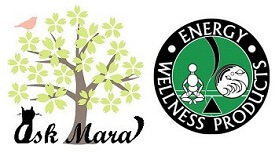Including the Health Benefits of Cinnamon
We are going to review the cinnamon types, its history and the health benefits of Cinnamon. Cinnamon has stood the test of time not just as a spice, but as a very sought after trading item giving many countries power. It was first imported to Egypt in 2000 B.C. and was used for medicinal purposes as well as part of their embalming process. The Romans used cinnamon as a flavoring in wines, as a fragrance and in beauty products.
Cinnamon as well as Cassia are also mentioned throughout the bible. Moses was commanded to use cinnamon as part of his holy annointing oil and Solomon made reference to it in proverbs as the sweet spice of love. Maybe that is why for Valentines Day they make cinnamon hearts. During biblical times it was also used as an incense during temple rituals. In Midevil times cinnamon was used as a general remedy treating ailments from coughs to arthritis. Their are two basic types of cinnamon cassia cinnamon and ceylon cinnamon.

Cinnamon is harvested from the inner bark of the tree. This part of the tree is very aromatic and full of flavor and oil. It is the inner bark that is dried to create cinnamon sticks. The trimmings and waste pieces as well as the leaf are then often distilled for the essential oil. Cinnamon is graded with Grade A being the highest. This grading system takes into account the oil content, its flavor and aroma. So when exploring cinnamon types make sure to keep these things in mind.
Cinnamon Types – Cassia vs Ceylon
Cassia cinnamon (Cinnamomum aromaticum or chinese / vietnamese cinnamon) is one fo the cinnamon types and is primarily produced in China and Indonesia. It is less expensive and has a stronger taste and smell then ceylon cinnamon. Cassia cinnamon is the cinnamon most sold throughout the USA. It is said that the stick of cassia cinnamon can not be broken with the hands, which is one way to tell what type of cinnamon you are using.
Ceylon cinnamon (Cinnamomum verum) is produced in Sri Lanka. It is more expensive and has a milder and sweeter flavor. Cinnamon sticks made from ceylon cinnamon are easy to break.
It is known that cassia cinnamon contains more coumarins than ceylon cinnamon and people using high amounts of cassia cinnamon should be aware that coumarins can be toxic to the liver, kidneys, and thin your blood.
Health Benefits of Cinnamon
- Reduces bad cholesterol and triglycerides
- Helps regulate blood sugar – Dr. Richard Anderson, Ph.D., found that compounds in cinnamon improve the body’s ability to use insulin to improve blood glucose levels.
- May be an effective pain reliever for arthritis
- May be effective for menstrual pain and infertility
- Promotes Blood Circulation.
- Great antifungal properties due to its content of cinnamaldehyde
- Awesome Antibacterial properties
- Great Anitoxidant
- Great for stomach issues because of its carminative, stomachic, and tonic properties
- According to a comparative study – cinnamon essential oil is more beneficial than clove essential oil for its ability to inhibit bacteria causing dental plaque. Hmm, maybe that is why it is widely used in mouth washes and tooth pastes.


I tend to agree with the latter video, even though there is no current scientific evidence that the ceylon cinnamon is effective for diabetes with no coumarin. The country harvesting it and using it for years medicinally, mentions that the the cinnamon types ceylon, is effective for diabetes. Again I also wonder why only the USA, Canada, and limited parts of Europe mostly use the cassia cinnamon.
References: https://www.ceylon-cinnamon.com/Identify-Cinnamon.html
PubMed ” Comparative study of cinnamon oil and clove oil on some oral microbiota.” By C Gupta, A Kumari, AP Garg, R Catanzaro, F Marotta
Medical News Today “What are the Health Benefits of Cinnamon” by Joseph Nordqvist
